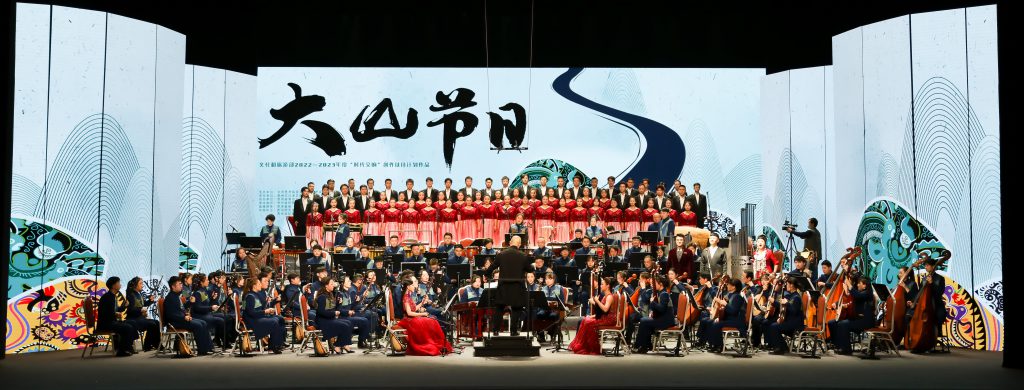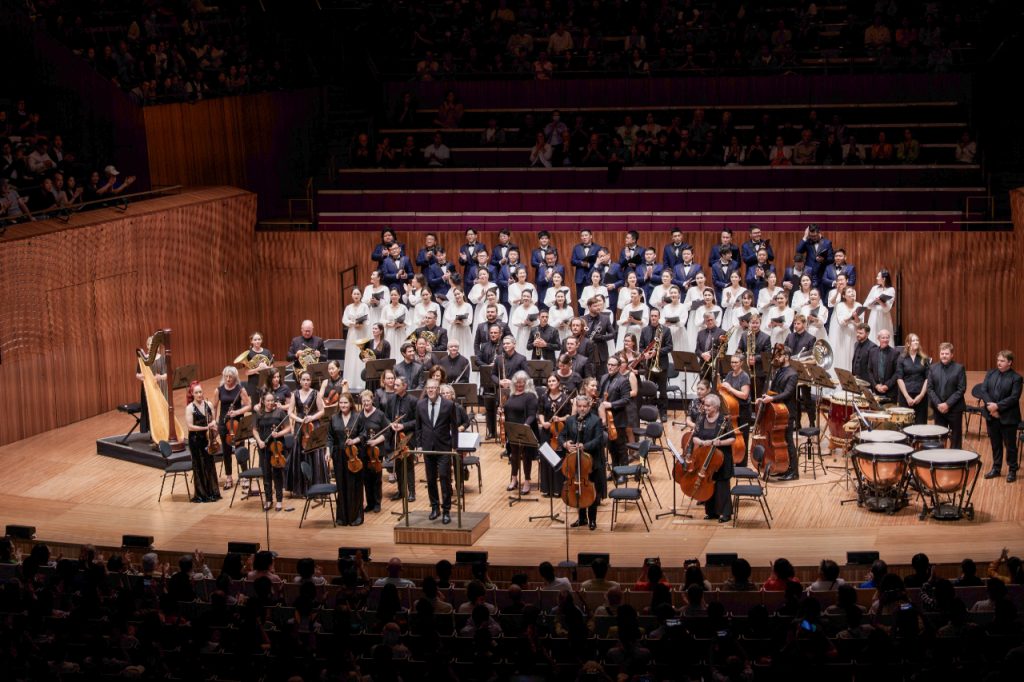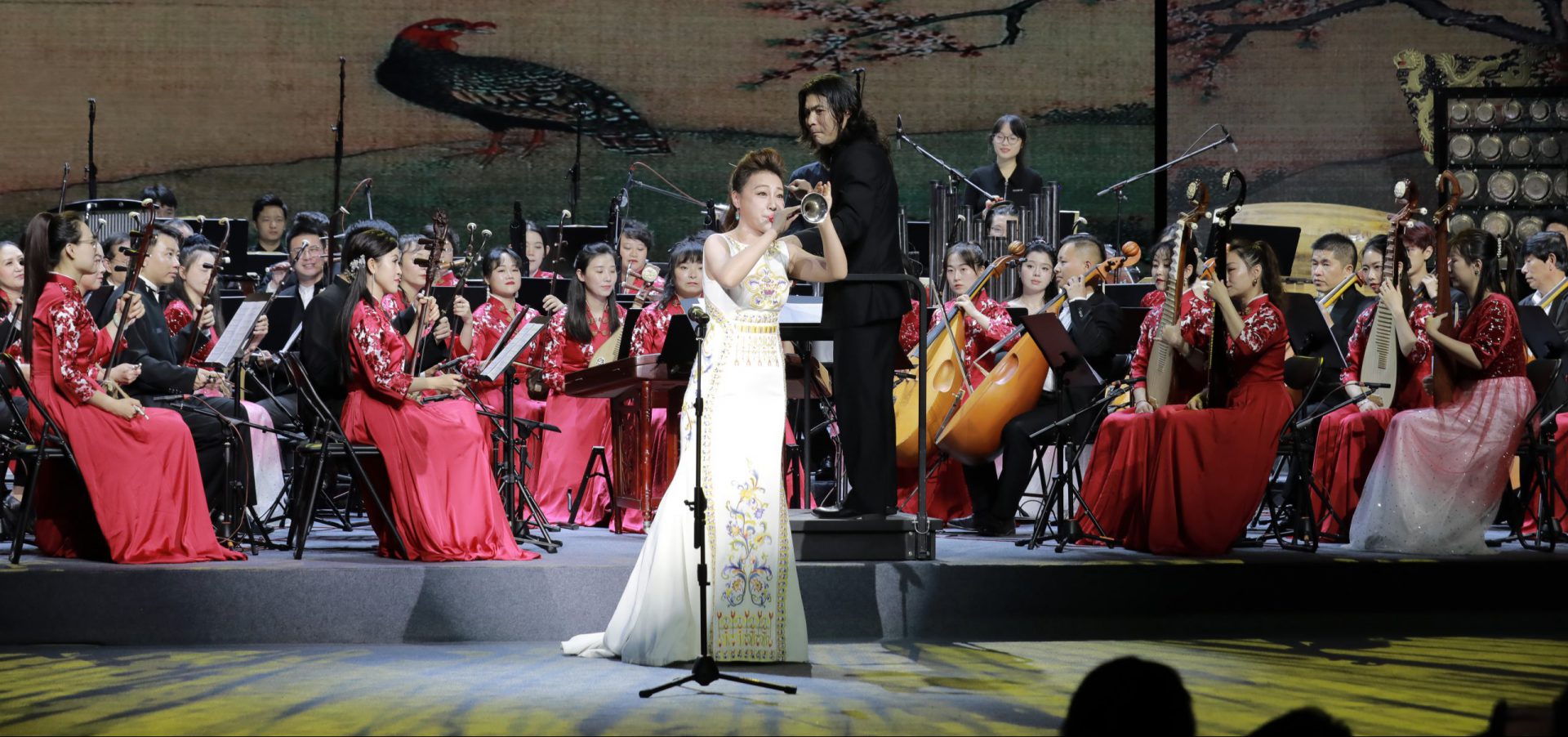Ahead of the ground-breaking musical collaboration between the Guizhou Chinese Orchestra and The Australia Orchestra, Folk Reimagined: East in Symphony, guest conductor Luke Spicer speaks with State of the Art Media.
Manan Luthra: Folk Reimagined: East in Symphony presents an interesting blend of Chinese and Australian performers, folk and symphony, and Eastern and Western cultures. How does it feel to be conducting it?
Luke Spicer: Conducting Folk Reimagined: East in Symphony is truly a new and exciting experience for me. It’s not every day that you get to work with such a rich blend of musical traditions – Chinese and Australian performers coming together, folk melodies meeting symphonic structure, East meeting West. I’m incredibly inspired by the opportunity to explore how these distinct sounds can complement and elevate one another. Blending them into a cohesive symphonic experience is both a creative challenge and a privilege. It pushes me out of my comfort zone in the best possible way and opens up new artistic possibilities that I’m thrilled to bring to the stage.
Manan: The description for the concert states that “Folk Reimagined journeys through the soul of Chinese folk tradition”. How do you interpret this?
Luke: To me, the phrase ‘journeys through the soul of Chinese folk tradition’ speaks to more than just the music – it’s about emotion, history, and identity. Chinese folk music carries the stories, struggles, and joys of generations, often passed down orally and deeply tied to place and community. In this concert, we’re not just playing melodies – we’re interpreting the spirit behind them. By reimagining these pieces in a symphonic context, we’re honouring their roots while also giving them new life, allowing audiences – both familiar and new – to connect with their essence in a fresh, powerful way.

Manan: What can you share about the Guizhou Chinese Orchestra and Guizhou Kam Grand Choir?
Luke: The Guizhou Chinese Orchestra is truly one of China’s most distinctive ensembles. What makes them stand out is how deeply rooted they are in the cultural traditions of the Guizhou province. Their performances beautifully showcase the musical heritage of China’s diverse ethnic communities – especially the Miao, Dong, and Buyi peoples. What’s remarkable is how they blend traditional elements with contemporary interpretations, offering something that feels both authentic and fresh.
The Guizhou Kam Grand Choir is equally extraordinary. Their polyphonic singing is a UNESCO-recognised intangible cultural heritage, and for good reason. Their technique has been passed down entirely through oral tradition – no written scores, just generations of voices teaching and learning by ear. When they perform, there’s a purity and natural resonance to their sound that feels almost spiritual. It’s more than just a performance – it’s a living, breathing expression of culture.
Manan: What excites you most about working with the soloists, Jiang Kemei and Zhang Qianyuan?
What excites me most about working with Jiang Kemei and Zhang Qianyuan is the way they effortlessly bridge tradition and innovation. Both are true masters of their craft, and their artistry brings an incredible depth and authenticity to this concert.
Jiang Kemei, often called the ‘Queen of the Erhu,’ has an extraordinary ability to evoke emotion through just two strings. Her playing is deeply expressive – intimate yet powerful. Zhang Qianyuan, on the other hand, brings unmatched energy and precision to the suona. As the only suona performer to have won both the Golden Bell and Wenhua Awards – the highest honours in Chinese music – she commands the stage with a sound that’s both powerful and poetic.
I’m especially excited for Australian audiences to experience these two artists live. Their performances not only showcase the beauty and versatility of these traditional instruments but also reveal how dynamic and evolving this music is in the hands of such gifted virtuosos.
Manan: Tell me about the traditional Chinese instruments which will feature – what they are, their cultural importance, and the contribution you see them making to the performance.
Luke: This performance features a rich array of traditional Chinese instruments, each with a distinct voice and deep cultural significance. Instruments like the erhu, often referred to as the ‘Chinese violin,’ are incredibly expressive – it’s frequently used to convey emotional depth and narrative, sometimes with just a few haunting notes.
The suona, by contrast, is bold and celebratory. It’s a double-reed instrument with a striking sound that’s often heard at weddings and festivals. Its energy is infectious, and it brings a powerful dynamic to the performance.
We’ll also feature the pipa, a four-stringed lute known for its lyrical and virtuosic qualities; the dizi, a bamboo flute with a bright, clear tone; and the sheng, a fascinating mouth-blown free reed instrument that adds beautiful harmonic textures. Each of these instruments carries centuries of tradition and regional identity.
In this concert, they do more than add colour or texture – they’re central voices in the storytelling. They help communicate cultural memory, identity, and emotion in a way that words often can’t. It’s a powerful reminder of how music can transcend language and bring people closer to a culture’s heart.
Manan: Which pieces have been selected for the program and how do you approach them as a conductor?
Luke: The program is a carefully curated journey through both traditional and contemporary Chinese music. It includes iconic works like Yin Chengzong’s Yellow River Piano Concerto, performed by the incredible Tamara-Anna Cislowska, as well as vivid symphonic retellings of China’s Four Great Classical Novels – each filled with history, drama, and deep emotional storytelling.
We will also be presenting something especially exciting – the Australian premiere of Black Myth: Wukong, a spectacular new symphonic fantasy inspired by the groundbreaking video game. It’s bold, cinematic, and full of imaginative energy, bridging ancient mythology with a modern creative voice.
As a conductor, my approach is first and foremost to respect the origin and spirit of each piece. Whether it’s rooted in centuries-old folk tradition or a contemporary reinterpretation, I work to find the right balance between Eastern and Western orchestral practices. With a diverse ensemble of Chinese and Australian musicians, I see my role as a cultural bridge – helping to shape a performance that’s authentic, emotionally resonant, and accessible to audiences from all backgrounds.

Manan: What do you hope audiences take from the show?
Luke: I hope audiences walk away with a renewed appreciation for the depth and diversity of Chinese music. Beyond the technical brilliance, I want them to feel a sense of connection – to realise that while our instruments and scales may differ, the emotions we express through music are universal.
This concert is not just about performance; it’s about cultural dialogue. I hope it leaves people inspired to explore more, listen more deeply, and understand more broadly.
Manan: In the geopolitical zeitgeist we’re currently in, what statement do you think a collaboration like this makes?
Luke: In a time when political narratives often dominate global discourse, cultural collaborations like this are a powerful reminder of our shared humanity. Music transcends borders and languages.
By bringing together musicians from China and Australia to perform on the same stage, we’re showing that dialogue, respect, and creativity can flourish beyond politics. This concert is a celebration of friendship, mutual learning, and artistic exchange. It’s a statement that connection is always possible – when we choose to listen.
Folk Reimagined: East in Symphony plays at the Sydney Opera House on 7 July and the Melbourne Recital Centre on 9 July. Tickets are available via the link here.
